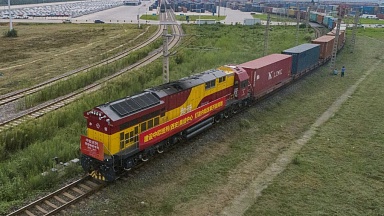RZD says that between January and September, intermodal traffic between China and Europe amounted to 387,900 twenty-foot equivalent units (TEUs), more than 1.6 times more than was reported for the period in 2019. In September alone, RZD reports that it transported a total of around 50,800 TEUs.
In comparison, a total of 347,000 TEUs were reported to have been shipped on the route for the entirety of 2019. As a result, traffic volumes between January and September have already exceeded the total volume reported for the entirety of last year by more than 40,000 TEUs.
RZD credits the growth in freight volumes to its efforts to introduce more competitive pricing, an improvement to the range and standard of services, and the diversification of routes offered. In particular, shipping on the Kaliningrad Railway has expanded to more than 10-times the amount transported in 2019, to around 6900 TEUs for September alone.
Increased demand for the fast shipment of goods from China to Europe following coronavirus lockdowns is also credited for more shippers choosing rail over equivalent sea transport.
The increase in traffic on the Kaliningrad Railway is primarily due to the launch of the United Transport and Logistics Company — Eurasian Rail Alliance (UTLC ERA), a joint venture of RZD and Belintertrans-Germany (BIT-Germany). Under the joint venture, RZD operates multimodal freight services along the Altynkol route between the Chinese border and the ports of Kaliningrad Oblast as part of its regular timetabled services. The freight is then transported from Kaliningrad by BIT-Germany to the port of Hamburg.
RZD says that it expects continued growth in its trans-Eurasian freight sector, highlighting a 25% increase in China — European shipping along its northern route through Mongolia since the start of the year, to more than 15,000 TEUs.




